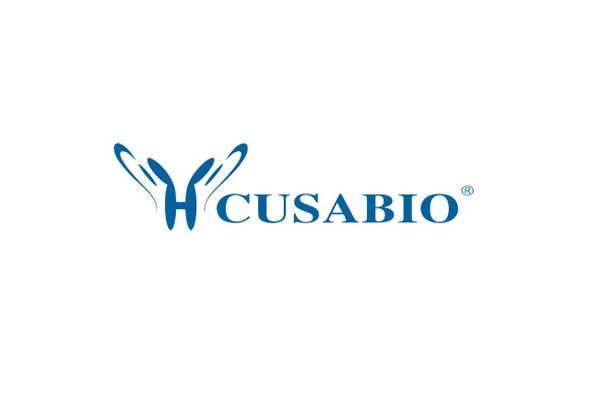Cusabio Human Recombinants
Recombinant Human Indolethylamine N-methyltransferase (INMT) | CSB-EP011723HU
- SKU:
- CSB-EP011723HU
- Availability:
- 3 - 7 Working Days
Description
Recombinant Human Indolethylamine N-methyltransferase (INMT) | CSB-EP011723HU | Cusabio
Alternative Name(s): Aromatic alkylamine N-methyltransferase ;Amine N-methyltransferase ;Arylamine N-methyltransferaseThioether S-methyltransferase ;TEMT
Gene Names: INMT
Research Areas: Metabolism
Organism: Homo sapiens (Human)
AA Sequence: MKGGFTGGDEYQKHFLPRDYLATYYSFDGSPSPEAEMLKFNLECLHKTFGPGGLQGDTLIDIGSGPTIYQVLAACDSFQDITLSDFTDRNREELEKWLKKEPGAYDWTPAVKFACELEGNSGRWEEKEEKLRAAVKRVLKCDVHLGNPLAPAVLPLADCVLTLLAMECACCSLDAYRAALCNLASLLKPGGHLVTTVTLRLPSYMVGKREFSCVALEKEEVEQAVLDAGFDIEQLLHSPQSYSVTNAANNGVCFIVARKKPGP
Source: E.coli
Tag Info: N-terminal 6xHis-SUMO-tagged
Expression Region: 1-263aa
Sequence Info: Full Length
MW: 44.9 kDa
Purity: Greater than 90% as determined by SDS-PAGE.
Relevance: Functions as thioether S-methyltransferase and is active with a variety of thioethers and the corresponding selenium and tellurium compounds, including 3-methylthiopropionaldehyde, dimethyl selenide, dimethyl telluride, 2-methylthioethylamine, 2-methylthioethanol, methyl-n-propyl sulfide and diethyl sulfide. Plays an important role in the detoxification of selenium compounds . Catalyzes the N-methylation of tryptamine and structurally related compounds.1 Publication
Reference: The DNA sequence of human chromosome 7.Hillier L.W., Fulton R.S., Fulton L.A., Graves T.A., Pepin K.H., Wagner-McPherson C., Layman D., Maas J., Jaeger S., Walker R., Wylie K., Sekhon M., Becker M.C., O'Laughlin M.D., Schaller M.E., Fewell G.A., Delehaunty K.D., Miner T.L. , Nash W.E., Cordes M., Du H., Sun H., Edwards J., Bradshaw-Cordum H., Ali J., Andrews S., Isak A., Vanbrunt A., Nguyen C., Du F., Lamar B., Courtney L., Kalicki J., Ozersky P., Bielicki L., Scott K., Holmes A., Harkins R., Harris A., Strong C.M., Hou S., Tomlinson C., Dauphin-Kohlberg S., Kozlowicz-Reilly A., Leonard S., Rohlfing T., Rock S.M., Tin-Wollam A.-M., Abbott A., Minx P., Maupin R., Strowmatt C., Latreille P., Miller N., Johnson D., Murray J., Woessner J.P., Wendl M.C., Yang S.-P., Schultz B.R., Wallis J.W., Spieth J., Bieri T.A., Nelson J.O., Berkowicz N., Wohldmann P.E., Cook L.L., Hickenbotham M.T., Eldred J., Williams D., Bedell J.A., Mardis E.R., Clifton S.W., Chissoe S.L., Marra M.A., Raymond C., Haugen E., Gillett W., Zhou Y., James R., Phelps K., Iadanoto S., Bubb K., Simms E., Levy R., Clendenning J., Kaul R., Kent W.J., Furey T.S., Baertsch R.A., Brent M.R., Keibler E., Flicek P., Bork P., Suyama M., Bailey J.A., Portnoy M.E., Torrents D., Chinwalla A.T., Gish W.R., Eddy S.R., McPherson J.D., Olson M.V., Eichler E.E., Green E.D., Waterston R.H., Wilson R.K.Nature 424:157-164(2003)
Storage: The shelf life is related to many factors, storage state, buffer ingredients, storage temperature and the stability of the protein itself. Generally, the shelf life of liquid form is 6 months at -20?/-80?. The shelf life of lyophilized form is 12 months at -20?/-80?.
Notes: Repeated freezing and thawing is not recommended. Store working aliquots at 4? for up to one week.
Function: Functions as thioether S-methyltransferase and is active with a variety of thioethers and the corresponding selenium and tellurium compounds, including 3-methylthiopropionaldehyde, dimethyl selenide, dimethyl telluride, 2-methylthioethylamine, 2-methylthioethanol, methyl-n-propyl sulfide and diethyl sulfide. Plays an important role in the detoxification of selenium compounds (By similarity). Catalyzes the N-methylation of tryptamine and structurally related compounds.
Involvement in disease:
Subcellular Location: Cytoplasm
Protein Families: Class I-like SAM-binding methyltransferase superfamily, NNMT/PNMT/TEMT family
Tissue Specificity: Widely expressed. The highest levels were in thyroid, adrenal gland, adult and fetal lung. Intermediate levels in heart, placenta, skeletal muscle, testis, small intestine, pancreas, stomach, spinal cord, lymph node and trachea. Very low levels in adult and fetal kidney and liver, in adult spleen, thymus, ovary, colon and bone marrow. Not expressed in peripheral blood leukocytes and brain.
Paythway:
Form: Liquid or Lyophilized powder
Buffer: If the delivery form is liquid, the default storage buffer is Tris/PBS-based buffer, 5%-50% glycerol. If the delivery form is lyophilized powder, the buffer before lyophilization is Tris/PBS-based buffer, 6% Trehalose, pH 8.0.
Reconstitution: We recommend that this vial be briefly centrifuged prior to opening to bring the contents to the bottom. Please reconstitute protein in deionized sterile water to a concentration of 0.1-1.0 mg/mL.We recommend to add 5-50% of glycerol (final concentration) and aliquot for long-term storage at -20?/-80?. Our default final concentration of glycerol is 50%. Customers could use it as reference.
Uniprot ID: O95050
HGNC Database Link: HGNC
UniGene Database Link: UniGene
KEGG Database Link: KEGG
STRING Database Link: N/A
OMIM Database Link: OMIM









